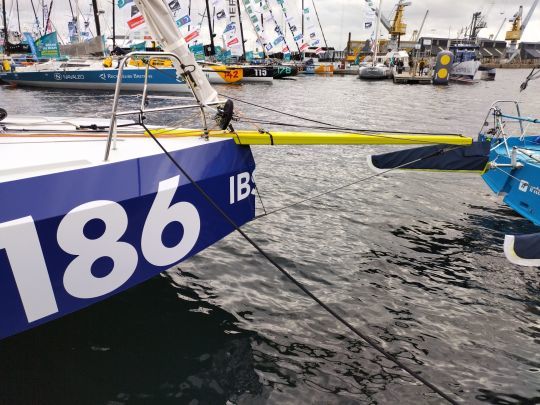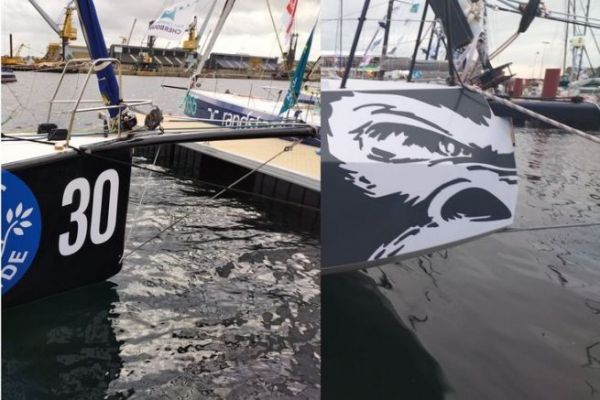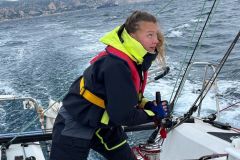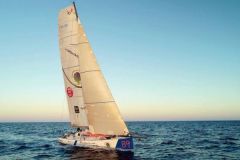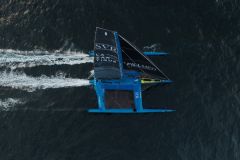The evolution of naval architecture in a few meters
Strolling along the quays of Saint-Malo in the fall of 2023, the Class40s gathered along the basin looked like a great gallery of evolution, for those who are curious about boat design. As the interest for this class of ocean racing yachts continues, we propose to decipher with the help of some images the changes experienced by these boats, through some images of their bow shapes, which say a lot about their performance and their behavior at sea.
Classic and slim bows
The number of the boat is a good indication of its age. There were a few small numbers on the pontoons, testifying to the beginnings of the class, with rather classic shapes. The right bow of the number 30, Morgane Ursault Poupon's Médecins du Monde, a Rogers design from 2007, is cut out for a versatile use in the spirit of versatility between amateurs and professionals. The sailboat, if it surfs at good speeds, keeps fine water entries and "pierces the wave".
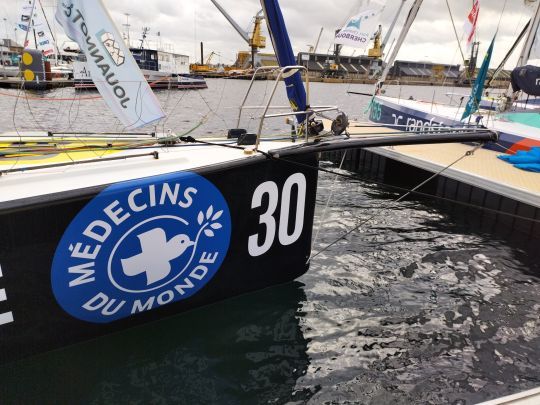
Thickening bows
As the speed of the sailboats increases, the architects increase the volume on the bow, to avoid getting stuck in the waves. This is how we find the Nestenn 153 sailboat. If it remains "a pointed nose", the volume of the bow is consequent and the immersed surfaces flatter on the front, for this Manuard plan, a Mach 40.3 of 2018.
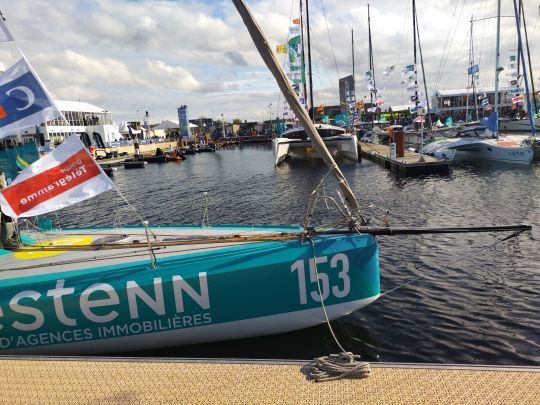
The scow revolution
With Ian Lipinski's Crédit Mutuel sailboat launched in 2019, the "scow revolution" has arrived. The naval architect David Raison was inspired by these North American sailboats, the scows with their extremely wide and voluminous bows. By transposing it to the Class 40, while respecting the rules, he created an extremely powerful boat. This Max 40 opened the way and underwent various evolutions, leading other architects in this direction.
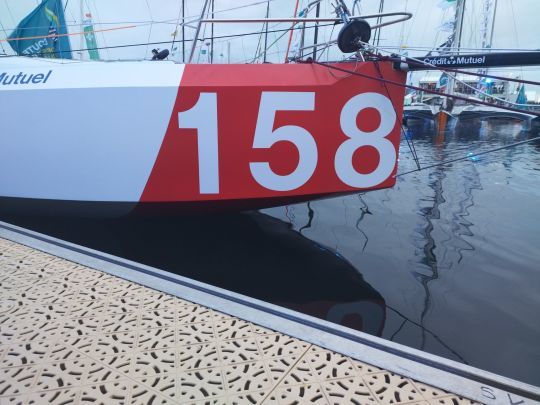
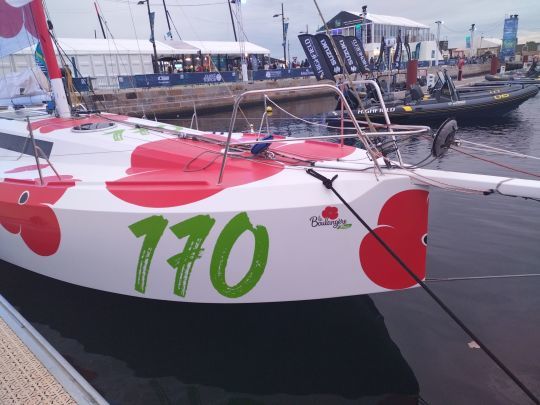
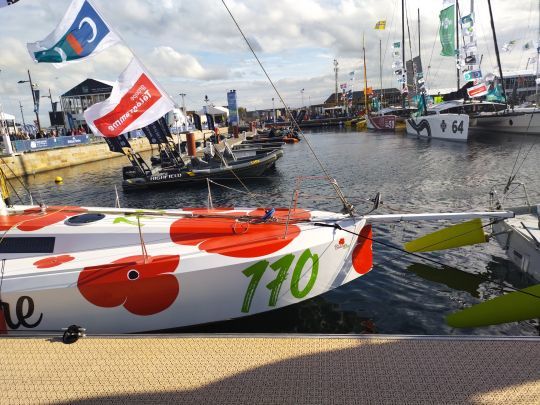
Crosscall number 166, Lift v2 signed Marc Lombard in 2021 keeps these large volumes at the bottom of the bow, while refining the sections at deck level. The length is kept, limiting the weight at deck level and also facilitating the eventual water exit.
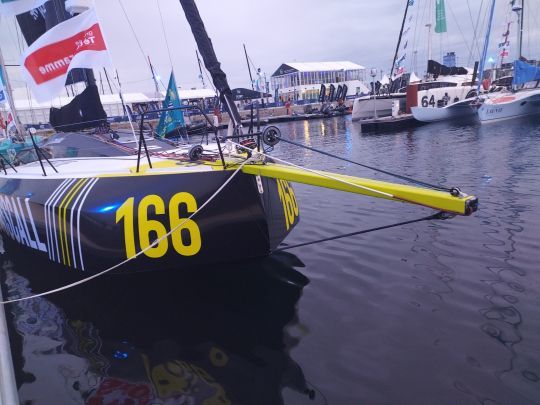
50 shades of scow
All the new boats launched for the Route du Rhum 2022 take this evolution into account, taking into account the feedback from the first generation scows. The bowsprit goes up, in the extension of a keel line that is more "rocky", i.e. with an upward inflection. When catching the wave, the sailboats are less likely to sink and the boats are less hard and less wet.
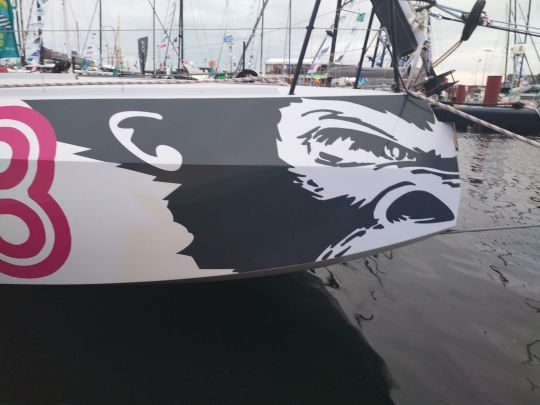
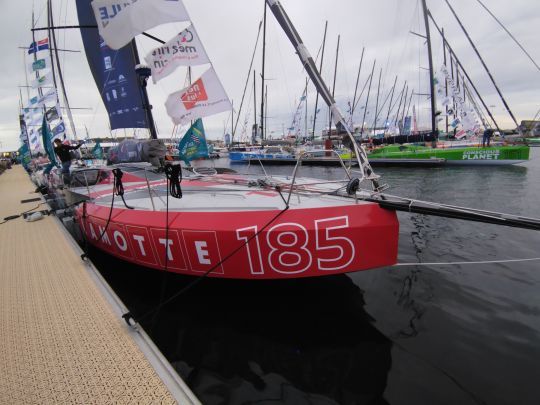
Like any evolution, at first very clear-cut, we then see finer evolutions, from the 185 Lamotte Création, and 186 IBSA, to the Mach 40.5 of Manuard, to the 182 Paprec Arkea of Marc Lombard, passing by the Pogo S4 173, signed Guillaume Verdier.
